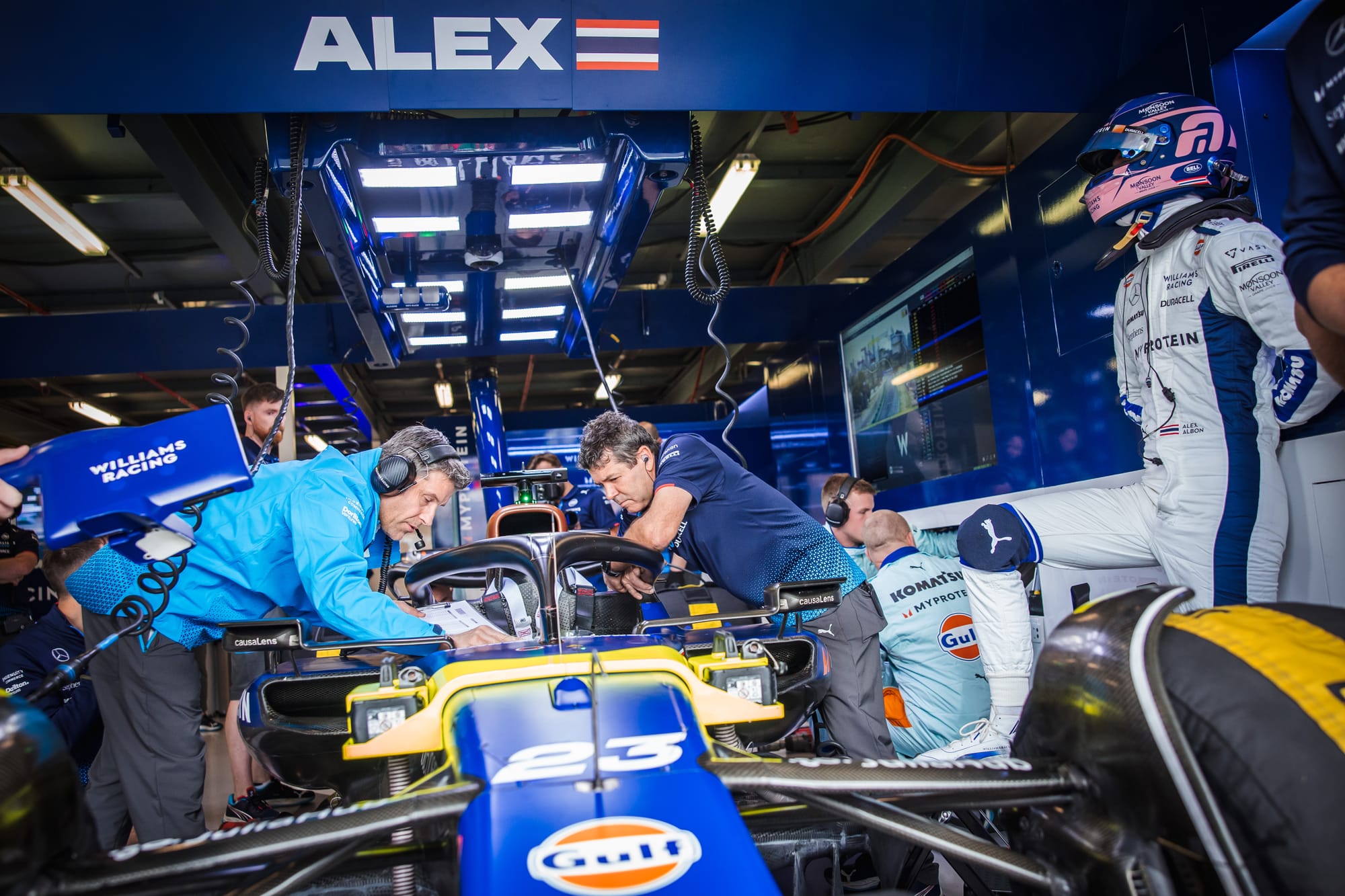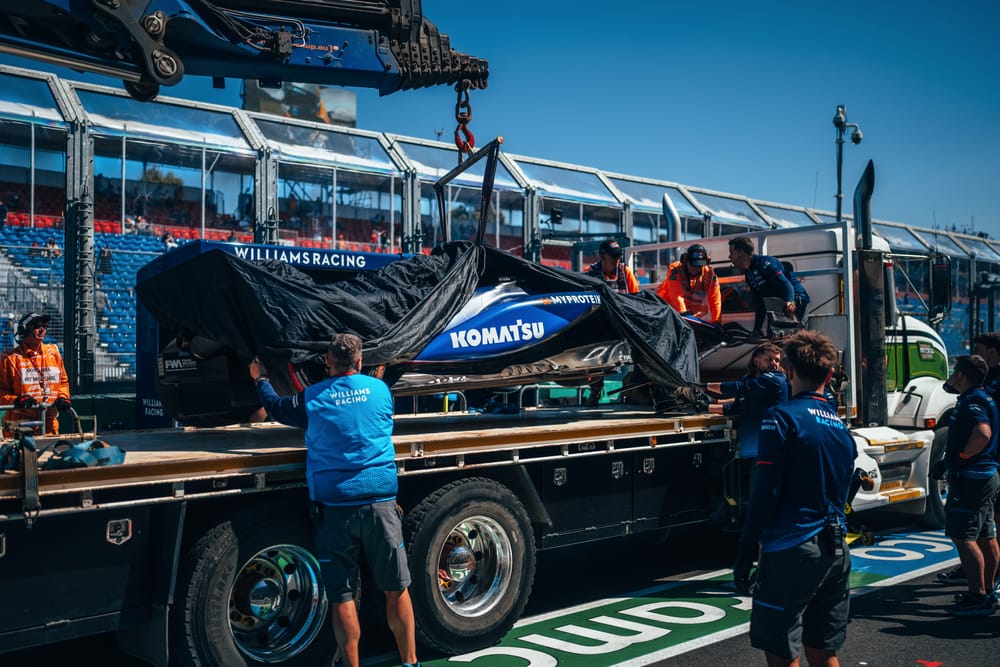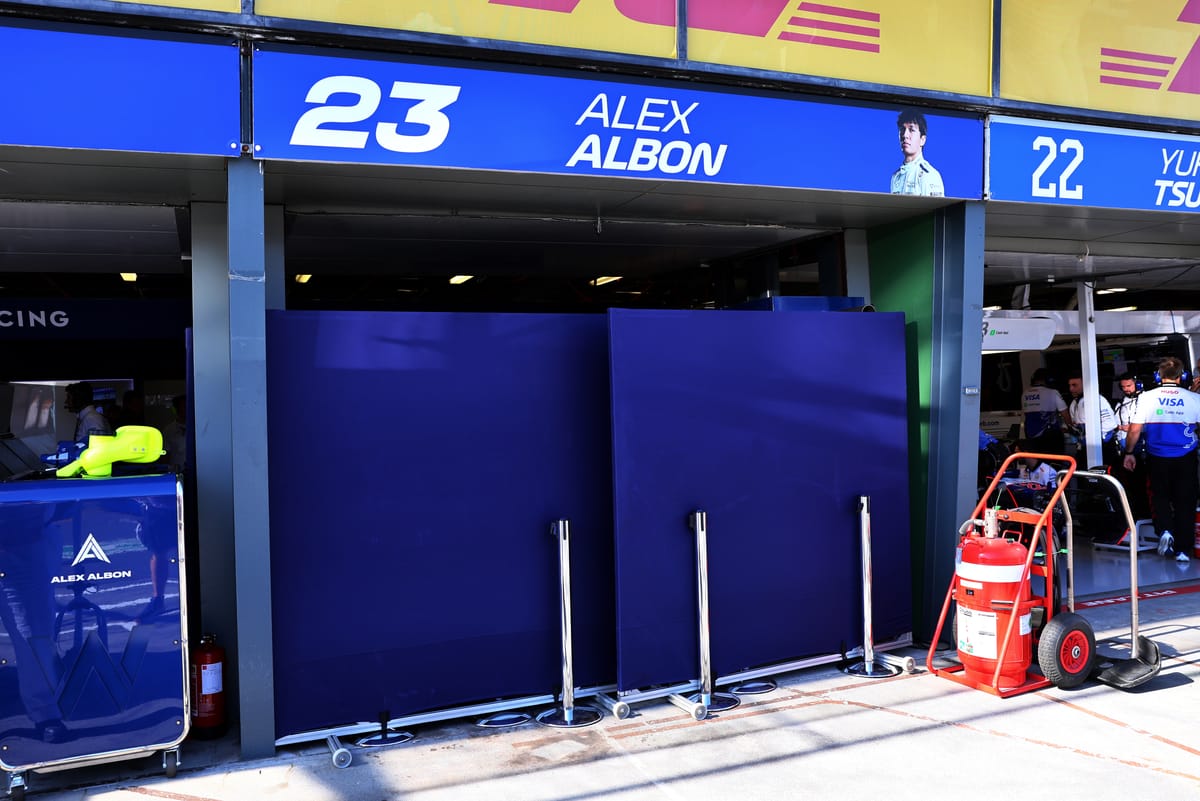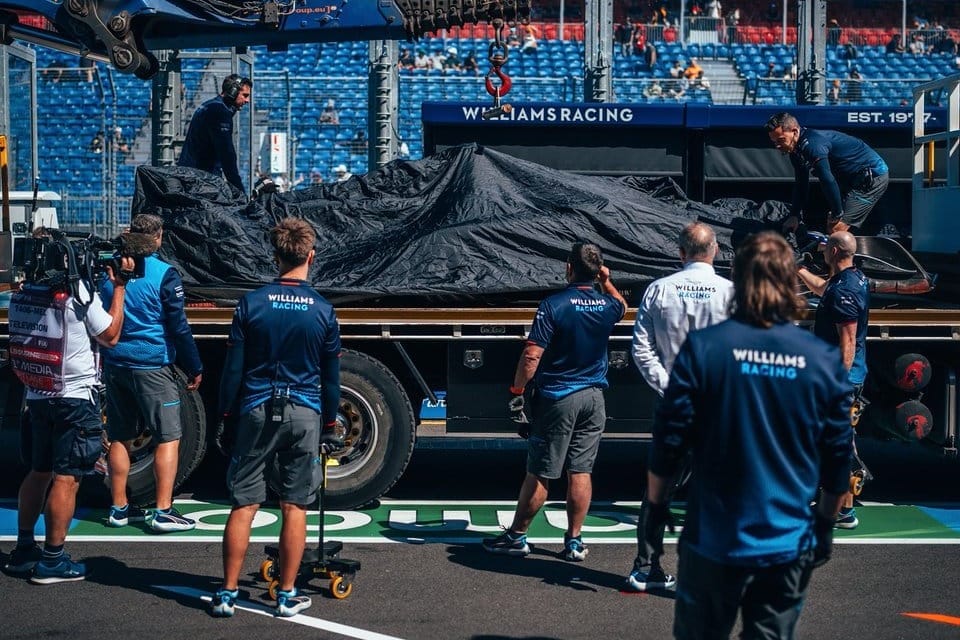Up Next

The Williams Formula 1 team will have had an extremely busy time since the Australian Grand Prix making sure it has two cars ready for Japan this weekend after Alex Albon's Melbourne practice crash led to his team-mate Logan Sargeant not even being able to race.
Gary Anderson gives his take on how Williams ended up in that predicament at all and the work it will have had to do in the build-up to Suzuka.
What happened to Williams in Melbourne shows the risks of an F1 team getting ahead of itself in terms of its ambition.
Fundamentally, the problem of not having a spare chassis and therefore having to field only one car in Melbourne came down to not starting manufacturing work early enough.
This will have been with the right intentions. Team principal James Vowles knows exactly what timelines a successful F1 team should work to through his experience with Mercedes and minimising production time so that you maximise design time is the way to ensure you have a car with more performance.
The problem is that while the big teams spent years reducing the time it takes to make everything that’s needed, Williams was standing still thanks to its financial struggles before Dorilton Capital took it over in 2020. It's still playing catch-up.
It's a difficult situation when you're short on parts and I faced similar problems in my time as a technical director, but not quite so bad. We never ended up only being able to run one car, although I did have situations where we didn’t have a spare chassis for the first race of the season and everyone had their fingers crossed that there wasn’t a crash.
But I have had to swap ‘good’ parts between cars and sometimes you have to favour the stronger driver. Alex Albon didn’t score a point in Australia, but it was the right decision to field him and maximise the chance of getting into the top 10 and the potential points that might just have come their way.
Williams originally intended to have three chassis available for the first race. That timeline slipped back to Australia and it seems like it will be the fifth race in China before Williams has the spare available.
Vowles has presented it as having to make a choice between prioritising performance parts or the spare chassis but I disagree with him that this was forced on Williams by not having the right processes in place.
He's right to say that the management of building an F1 car is hugely complex given the number of parts and the lead times involved. Every minute of that process must be managed and Vowles has talked about needing a multi-million pound ERP (enterprise resource planning) system to do that, which is being put in place.
If you haven’t got the kit you can still manage the build process with a pencil and paper. It just takes time to keep on top of it. After all, we still built cars before the teams had all these new-fangled resources.
But you should not be in a situation where you’re taking people off the chassis build to make more front wings or other parts. Every part of the car has specific expertise and resources required and having to swap that around constantly just shows you don’t have the resources to build everything on the timeline you are working to.
It will all go back to hitting the button on producing the first chassis too late and starting earlier will have prevented this.
Timing that correctly will ensure your performance is as good as it can possibly be for the workforce you have in place, F1 is all about pushing for every advantage but sometimes you need to bite the bullet and make the best of what you have.
Managing a team is about cutting your cloth accordingly and you must manage the build programme based on what is possible.
Remember, the chassis isn’t a single component as there’s all sorts of inserts and other bits and pieces involved so that in itself is complicated. Williams slipped up by taking too much time in the design phase and not enough to manufacture the monocoques it needs – in reality it missed the mark by some distance.
If you are too ambitious with your timelines then you will hit problems and this has knock-on effects.
If you have already scheduled too aggressively then that creates the need to intervene to move resources around, which makes the whole process less efficient.
That’s how you end up with not just a small delay, but very big ones. So Williams finds itself without a spare chassis, with the repair job on Albon’s original monocoque taking up resources that could be allocated to building new performance parts. There will have been a chain of problems over many months that Williams has hit and it all adds up to a big disadvantage.
HOW WILLIAMS WILL HAVE TACKLED ALBON CHASSIS REPAIRS

The repair work on Albon’s chassis, which will be available for use at Suzuka this weekend, will have consumed significant resources. And the process will have started the moment that the damage had been assessed.
Vowles characterised that damage as “the chassis on the front-right corner where the suspension goes in is torn apart” so that’s a big repair job. The car got back to Williams at 2am last Monday, with a tight timeline for getting it fixed in time to ship to Suzuka.
Work will have started immediately as the photographs of the damage will have been assessed. So at the factory you will ensure you have made any new submoulds needed for the area damaged so you can start immediately when the chassis hits the shop floor.
Effectively, you are replacing the damaged area so the first thing you do is cut back the damaged area to the point where it is structurally sound.
The chassis will be made of an outer skin, a honeycomb core and an inner skin. You’ll cut it all back so all the damaged parts are gone and then you’ll take away another 25mm of the honeycomb and the same again of the inner skin, you will then put the sub mould on the external chassis surface.
You’ll lay up the new outer skin onto the sub mould and overlap the existing outer skin to connect it all together then you will put in the new honeycomb and also patch up the inner skin with a similar overlap.
All that depends on where the damaged areas are and if there is enough room around it, if not compromises on the amount of overlap will need to be made.
You will also have to use a lower-temperature resin system for these repairs because you don’t want to damage the existing structure. They may use a simple vacuum pump to consolidate the new section, or to achieve a lower vacuum and better consolidation of those areas you could put it back in the autoclave, used to cure composite parts.
The chassis should be as good as new in terms of its stiffness, but you can’t avoid paying some kind of price in terms of weight. It will be heavier as you have to put additional material in there.
It will be interesting to see if Williams decides to give the patched-up chassis to Sargeant so that Albon has the one that is slightly lighter. It’s not a case of one chassis being bad, but it’s just the price you pay for repairs.
With that work complete, Williams can get back to completing the spare chassis hopefully so it’s available for Shanghai in a fortnight.
But I wouldn’t like to go to Suzuka of all places without a spare, so I hope Williams has a clean event and there’s no repeat of the damage otherwise it will be another tough weekend.
What’s positive is that Vowles and the rest of the leadership, including chief technical officer Pat Fry, have recognised the extent of the problems they have faced. Even before what happened in Australia, they had been very honest about the problems they had with the build of the car and promised it will not happen again.
It all shows how far Williams has to go to compete with the leading teams and will have been a wake-up call to those who have been in the team for a long time and perhaps not realised how much needs to be done.






